A Hysteresis Model for Fixed and Sun Tracking Solar PV Power Generation Systems
Abstract
1. Introduction
2. Description and Representation of the Solar System
3. Solar PV Power Generation Models
4. Hysteresis Models for PV Power Generation
5. Conclusions
Acknowledgments
Author Contributions
Conflicts of Interest
References
- Filik, T.; Basaran Filik, Ü. Efficiency Analysis of the solar tracking PV systems in Eskisehir. Anadolu Univ. J. Sci. Technol. A 2017, 18, 209–217. [Google Scholar] [CrossRef][Green Version]
- Nguyen, D.T.; Le, L.B. Optimal bidding strategy for microgrids considering renewable energy and building thermal dynamics. IEEE Trans. Smart Grid 2014, 5, 1608–1620. [Google Scholar] [CrossRef]
- Chen, S.X.; Gooi, H.B.; Wang, M. Sizing of energy storage for microgrids. IEEE Trans. Smart Grid 2012, 3, 142–151. [Google Scholar] [CrossRef]
- Ulbricht, R.; Fisher, F.; Lehner, W.; Donker, H. First Steps Towards a Systematical Optimized Strategy for Solar Energy Supply Forecasting. In Proceedings of the European Conference on Machine Learning and Principles and Practice of Knowledge Discovery in Databases, Prague, Czech Republic, 23–27 September 2013. [Google Scholar]
- Dolara, A.; Leva, S.; Manzolini, G. Comparison of different physical models for PV power output prediction. Sol. Energy 2015, 119, 83–99. [Google Scholar] [CrossRef]
- Fernandez-Jimenez, L.A.; Muñoz-Jimenez, A.; Falces, A.; Mendoza-Villena, M.; Garcia-Garrido, E.; Lara-Santillan, P.; Zorzano-Alba, E.; Zorzano-Santamaria, P.J. Short-term power forecasting system for photovoltaic plants. Renew. Energy 2012, 44, 311–317. [Google Scholar] [CrossRef]
- Dunea, A.; Dunea, D.; Moise, V.; Olariu, M. Forecasting methods used for performance’s simulation and optimization of photovoltaic grids. In Proceedings of the 2001 IEEE Porto Power Tech Proceedings, Porto, Portugal, 10–13 September 2001. [Google Scholar]
- Monteiro, C.; Santos, T.; Fernandez-Jimenez, L.A.; Ramirez-Rosado, I.J.; Terreros-Olarte, M.S. Short-term power forecasting model for photovoltaic plants based on historical similarity. Energies 2013, 6, 2624–2643. [Google Scholar] [CrossRef]
- Martín, L.; Zarzalejo, L.F.; Polo, J.; Navarro, A.; Marchante, R.; Cony, M. Prediction of global solar irradiance based on time series analysis: Application to solar thermal power plants energy production planning. Sol. Energy 2010, 84, 1772–1781. [Google Scholar] [CrossRef]
- Ogliari, E.; Grimaccia, F.; Leva, S.; Mussetta, M. Hybrid predictive models for accurate forecasting in PV systems. Energies 2013, 6, 1929–2013. [Google Scholar] [CrossRef]
- Ji, W.; Chee, K.C. Prediction of hourly solar radiation using a novel hybrid model of ARMA and TDNN. Sol. Energy 2011, 85, 808–817. [Google Scholar] [CrossRef]
- Dolara, A.; Grimaccia, F.; Leva, S.; Mussetta, M.; Ogliari, E. A Physical hybrid artificial neural network for short term forecasting of PV plant power output. Energies 2015, 8, 1138–1153. [Google Scholar] [CrossRef]
- Hocaoglu, F.; Gerek, O.N.; Kurban, M. Hourly solar radiation forecasting using optimal coefficient 2-D linear filters and feed-forward neural networks. Sol. Energy 2008, 8, 714–726. [Google Scholar] [CrossRef]
- Mellit, A.; Massi, P.A. A 24-h forecast of solar irradiance using artificial neural network: Application for performance prediction of a grid-connected PV plant at Trieste, Italy. Sol. Energy 2010, 84, 807–821. [Google Scholar] [CrossRef]
- Simonov, M.; Mussetta, M.; Grimaccia, F.; Leva, S.; Zich, R.E. Artificial intelligence forecast of PV plant production for integration in smart energy systems. Int. Rev. Electr. Eng. 2012, 7, 3454–3460. [Google Scholar]
- Zhu, H.; Li, X.; Sun, Q.; Nie, L.; Yao, J.; Zhao, G. A power prediction method for photovoltaic power plant based on wavelet decomposition and artificial neural networks. Energies 2015, 9, 9–11. [Google Scholar] [CrossRef]
- Izgi, E.; Oztopal, A.; Yerli, B.; Kaymak, M.K.; Şahin, A.D. Short-mid-term solar power prediction by using artificial neural networks. Sol. Energy 2012, 86, 725–733. [Google Scholar] [CrossRef]
- Zeng, J.; Qiao, W. Short-term solar power prediction using a support vector machine. Renew. Energy 2012, 52, 118–127. [Google Scholar] [CrossRef]
- Tao, C.; Shanxu, D.; Changsong, C. Forecasting Power Output for Grid-Connected Photovoltaic Power System without using Solar Radiation Measurement. In Proceedings of the 2010 2nd IEEE International Symposium on Power Electronics for Distributed Generation Systems (PEDG), Hefei, China, 16–18 June 2010; pp. 773–777. [Google Scholar]
- Yona, A.; Senjyu, T.; Funabashi, T. Application of Recurrent Neural Network to Short-Term-Ahead Generating Power Forecasting for Photovoltaic System. In Proceedings of the 2007 IEEE Power Engineering Society General Meeting, Tampa, FL, USA, 24–28 June 2007; pp. 1–6. [Google Scholar]
- Tijjani, B.I. Comparison between first and second order Angstrom type models for sunshine hours at Katisna, Nigeria. Bayero J. Pure Appl. Sci. 2011, 4, 24–27. [Google Scholar]
- El-Metwally, M. Sunshine and global solar radiation estimation at different sites in Egypt. J. Atmos. Sol. Terr. Phys. 2005, 67, 1331–1342. [Google Scholar] [CrossRef]
- Khalil, S. A; Fathy, A.M. An empirical method for estimating global solar radiation over Egypt. Acta Polyechnica 2008, 48, 48–53. [Google Scholar]
- Elagib, N.; Mansell, M.G. New approaches for estimating global solar radiation across Sudan. Energy Convers. Manag. 2000, 21, 271–287. [Google Scholar] [CrossRef]
- Sarsah, E.A.; Uba, F.A. Monthly-specific daily global solar radiation estimates based on sunshine hours in Wa, Ghana. Int. J. Sci. Technol. Res. 2013, 2, 246–254. [Google Scholar]
- Gairaa, K.; Bakelli, Y. A comparative study of some regression models to estimate the global solar radiation on the horizontal surface from sunshine duration and meteorological parameters for Ghardaia site, Algeria. ISRN Renew. Energy 2013, 2013, 754956. [Google Scholar] [CrossRef]
- Falayi, E.O.; Adepitan, J.O.; Rabiu, A.B. Empirical models for the correlation of global solar radiation with meteorological data for Iseyin, Nigeria. Int. J. Phys. Sci. 2008, 3, 210–216. [Google Scholar]
- Okonkwo, G.N.; Nwokoye, A.O.C. Estimating global solar radiation from temperature data in Minna location. Eur. Sci. J. 2014, 10, 1857–7431. [Google Scholar]
- Adeala, A.A.; Huan, Z.; Enweremadu, C.C. Evaluation of global solar radiation using multiple weather parameters as predictors for South Africa Provinces. Therm. Sci. 2015, 19, 495–509. [Google Scholar] [CrossRef]
- Kolebaje, O.T.; Sika, A.I.; Akinyemi, P. Estimating solar radiation in Ikeja and Port Harcourt via correlation with relative humidity and temperature. Int. J. Energy Prod. Manag. 2016, 1, 253–262. [Google Scholar] [CrossRef]
- Ayvazogluyuksel, O.; Basaran Filik, U. Estimation of monthly average hourly global solar radiation from the daily value in Canakkale, Turkey. J. Clean Energy Technol. 2017, 5, 389–393. [Google Scholar] [CrossRef][Green Version]
- Deepak, V.; Nema, S.; Shandilya, A.M.; Soubhagya, K.D. Maximum power point tracking (MPPT) techniques: Recapitulation in solar photovoltaic systems. Renew. Sustain. Energy Rev. 2016, 54, 1018–1034. [Google Scholar]
- Sharma, N.; Sharma, P.; Irwin, D.; Shenoy, P. Predicting Solar Generation from Weather Forecasts Using Machine Learning. In Proceedings of the 2011 IEEE International Conference on Smart Grid Communications (SmartGridComm), Brussels, Belgium, 17–20 October 2011. [Google Scholar]
- Filik, T.; Basaran Filik, Ü.; Gerek, Ö.N. Solar radiation-to-power generation models for one-axis tracking PV system with on-site measurements from Eskisehir, Turkey. In Proceedings of the E3S Web of Conferences, Wałbrzych, Poland, 21–22 September 2017. [Google Scholar]
- Mayergoyz, I. Mathematical Models of Hysteresis and their Applications; Elsevier Series; Electromagnetism Academic Press: New York, NY, USA, 2003; ISBN 9780124808737. [Google Scholar]
- Snaith, H.J.; Abate, A.; Ball, J.M.; Eperon, G.E.; Leijtens, T.; Noel, N.K.; Stranks, S.D.; Wang, J.T.; Wojciechowski, K.; Zhang, W. Anomalous hysteresis in perovskite solar cells. J. Phys. Chem. Lett. 2014, 5, 1511–1515. [Google Scholar] [CrossRef] [PubMed]
- Unger, E.L.; Hoke, E.T.; Bailie, C.D.; Nguyen, W.H.; Bowring, A.R.; Heumüller, T.; Christoforo, M.G.; McGehee, M.D. Hysteresis and transient behavior in current-voltage measurements of hybrid-perovskite absorber solar cells. Energy Environ. Sci. 2014, 7, 3690–3698. [Google Scholar] [CrossRef]
- Basaran Filik, Ü.; Filik, T.; Gerek, Ö.N. Global Solar Radiation, Temperature, Sun-Tracking and Ground Fixed Solar PV Power Generation Data Set for Winter Season from RERH. Available online: https://data.mendeley.com/datasets/vxg4t8yn6j/1 (accessed on 31 January 2018).
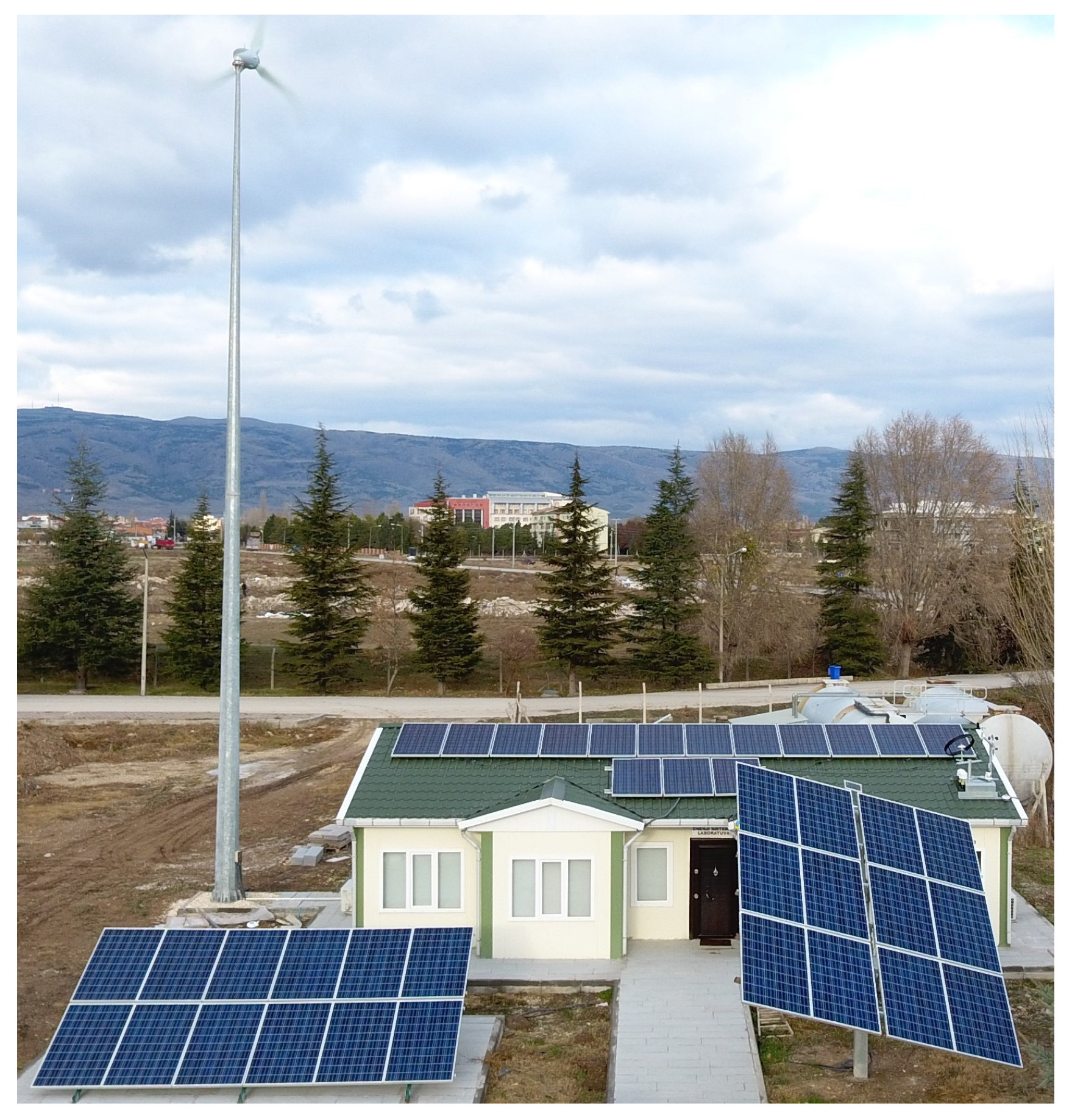
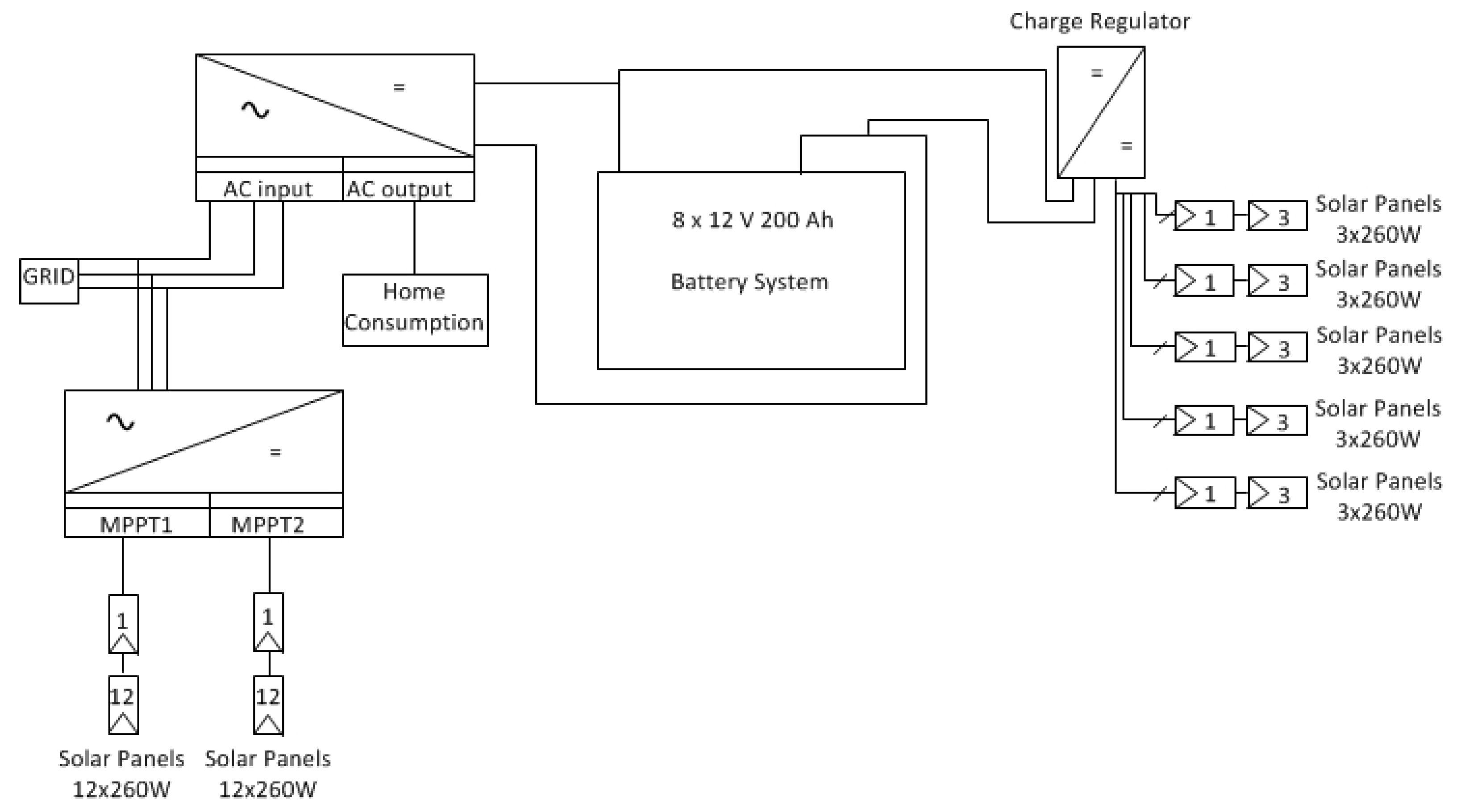
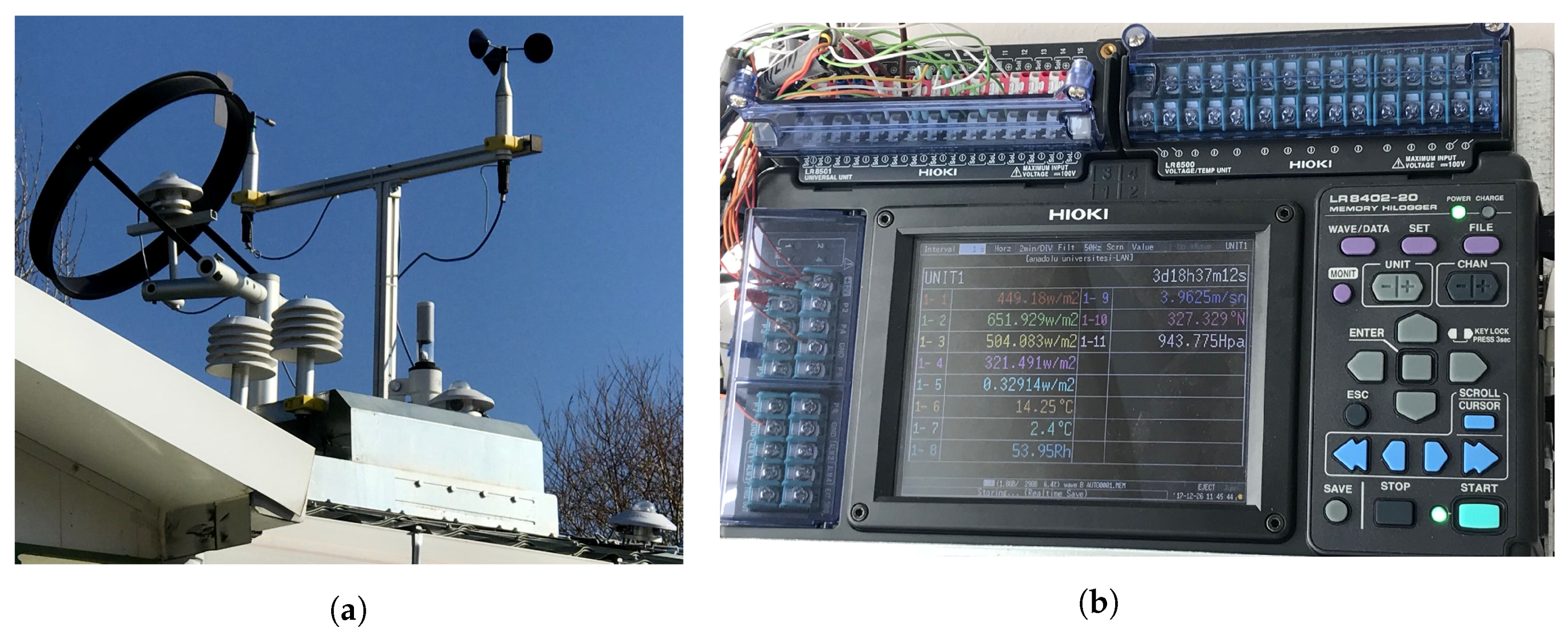

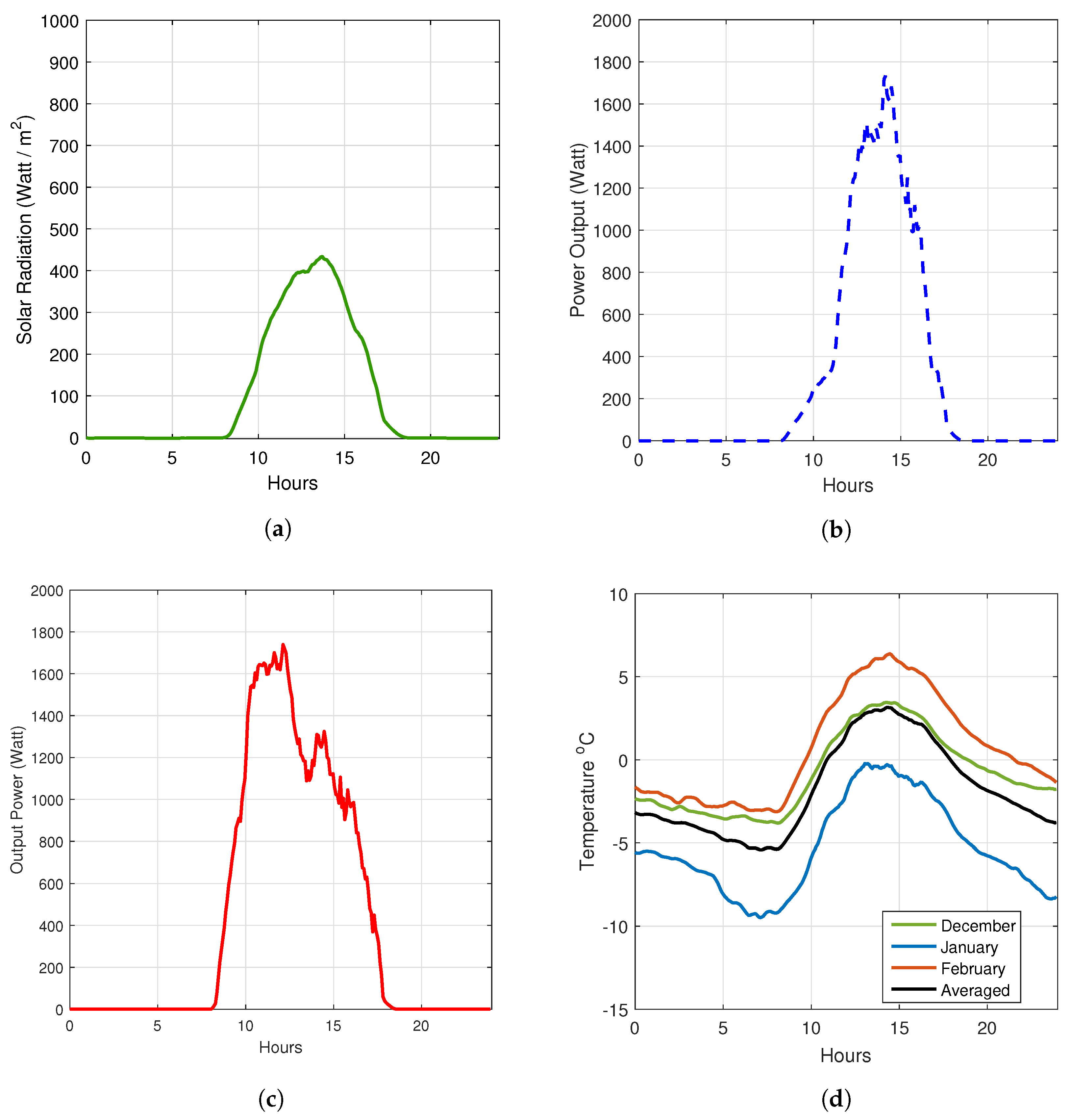



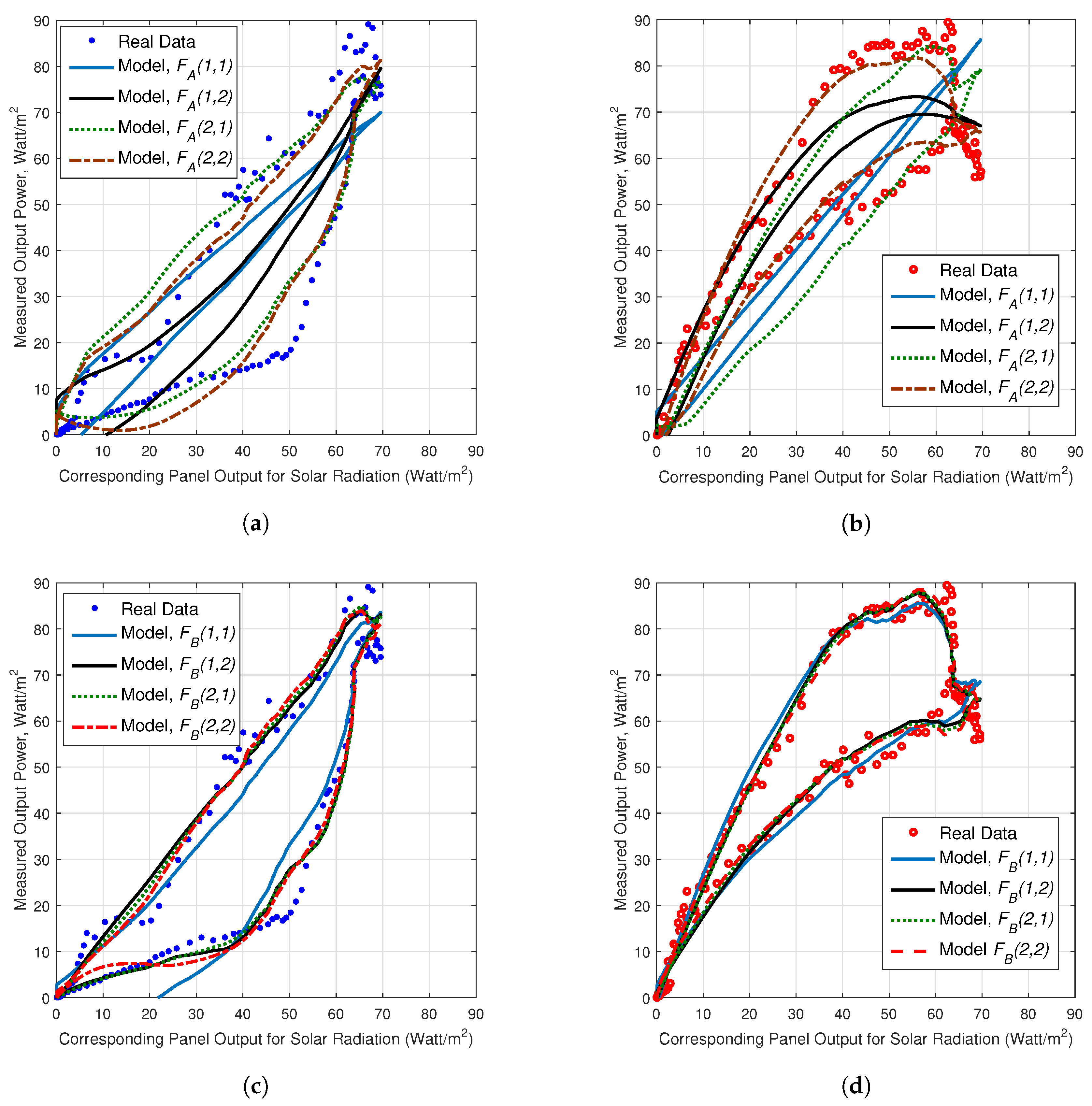
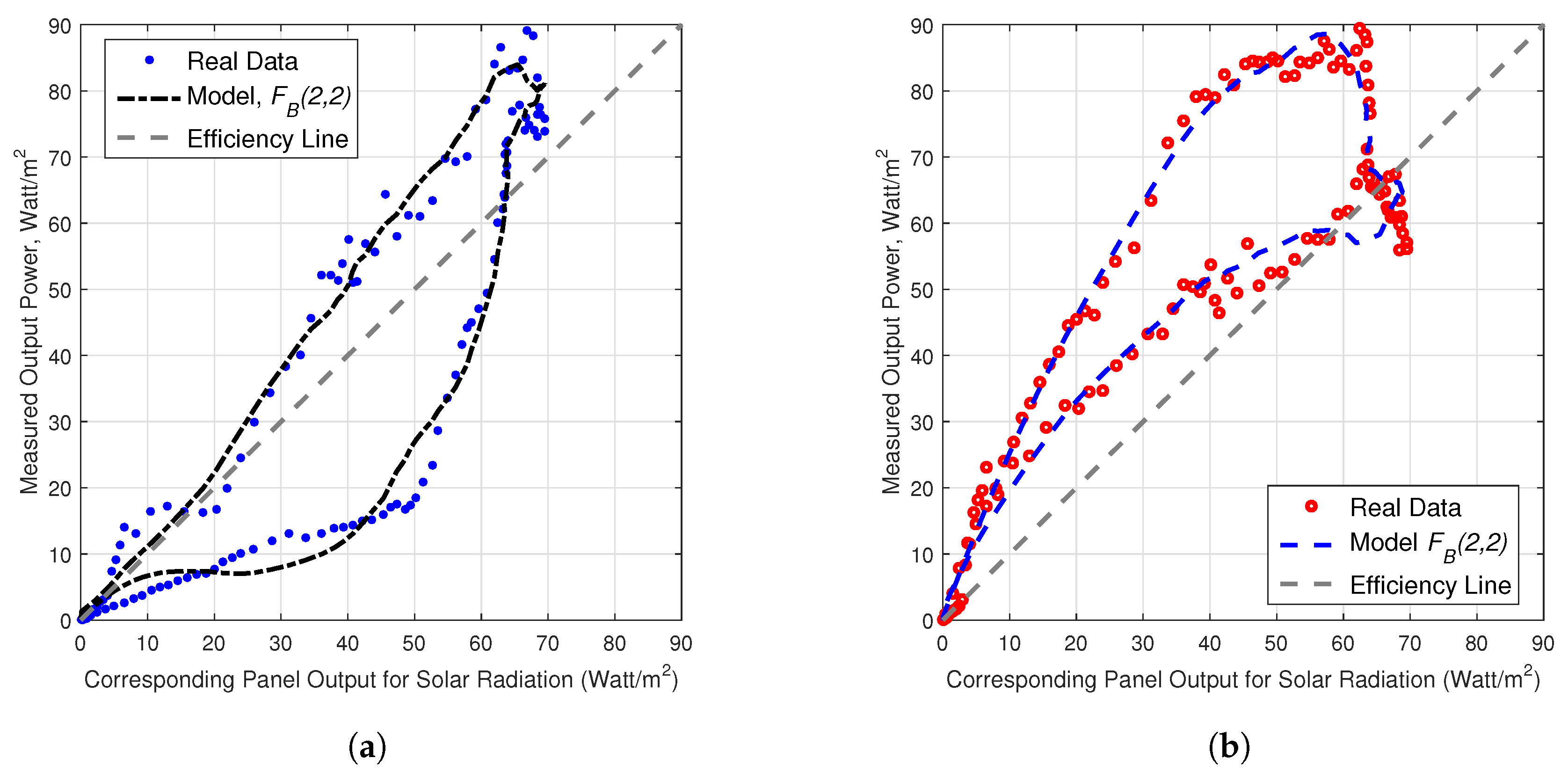
| Specifications | Value |
|---|---|
| ISO 9060 classification | First Class |
| Response time 95% (s) | 18 |
| Sensitivity (V/Wm) | Approx. 7∼14 |
| Impedance (Ω) | Approx. 20∼40 |
| Operating temperature range (C) | to |
| Response time 95% (s) | data |
| Irradiance range (W/m) | 0–4000 |
| Wavelength range | 385 to 3000 nm |
| Model | Model Function |
|---|---|
| Model A-1 | |
| Model A-2 | |
| Model A-3 | |
| Model A-4 | |
| Model B-1 | |
| Model B-2 | |
| Model B-3 | |
| Model B-4 |
| Winter | Fixed PV | Tracking PV | ||||||||||
|---|---|---|---|---|---|---|---|---|---|---|---|---|
| Model | ||||||||||||
| 3.63 | 2.42 | - | 3.63 | 0.80 | - | −0.92 | −1.30 | - | −0.92 | 1.31 | - | |
| 4.83 | 2.73 | - | 4.83 | 0.05 | 0.01 | −3.23 | −1.88 | - | −3.23 | 2.74 | −0.02 | |
| 3.66 | 8.03 | 1.42 | 3.66 | 0.47 | - | −0.95 | −6.53 | −1.33 | −0.95 | 1.62 | - | |
| 4.29 | 7.70 | 1.29 | 4.29 | 0.11 | 0.0064 | −2.83 | −5.57 | −0.96 | −2.83 | 2.70 | −0.019 |
| Winter | Fixed PV | ||||||||
|---|---|---|---|---|---|---|---|---|---|
| Model | |||||||||
| 3.32 | 0.71 | 0.53 | 0.2 | - | - | - | - | - | |
| −0.29 | 0.06 | 0.13 | −0.026 | 0.082 | 0.0012 | - | - | - | |
| 0.24 | 0.055 | 1.03 | −0.011 | 0.23 | 0.027 | - | - | - | |
| 2.08 | 1.22 | 0.46 | 0.27 | 0.16 | −0.0006 | 0.08 | −0.002 | −0.0007 |
| Winter | Tracking PV | ||||||||
|---|---|---|---|---|---|---|---|---|---|
| Model | |||||||||
| 3.14 | 0.86 | 1.65 | −0.25 | - | - | - | - | - | |
| 1.43 | 0.34 | 1.72 | 0 | −0.13 | −0.002 | - | - | - | |
| 0.97 | 0.22 | 1.97 | −0.005 | −0.18 | −0.019 | - | - | - | |
| 2.37 | 1.55 | 1.82 | −0.25 | 0.22 | −0.0025 | −0.012 | 0.0011 | −0.0003 |
| Winter | Fixed PV | Tracking PV | ||
|---|---|---|---|---|
| Model | MAE | RMSE | MAE | RMSE |
| 4.3185 | 8.1754 | 5.2961 | 9.5833 | |
| 3.7231 | 7.1004 | 3.2360 | 5.8737 | |
| 2.0609 | 4.0130 | 3.5432 | 6.4949 | |
| 2.0721 | 3.7568 | 1.9204 | 3.7438 | |
| 2.2234 | 4.1080 | 1.5329 | 3.0344 | |
| 1.2839 | 2.5657 | 1.3383 | 2.7015 | |
| 1.2709 | 2.5111 | 1.3249 | 2.6481 | |
| 1.2833 | 2.3537 | 1.2928 | 2.5578 | |
| [2,3,19,20] | 4.8780 | 4.8780 | 5.4692 | 10.07 |
© 2018 by the authors. Licensee MDPI, Basel, Switzerland. This article is an open access article distributed under the terms and conditions of the Creative Commons Attribution (CC BY) license (http://creativecommons.org/licenses/by/4.0/).
Share and Cite
Başaran Filik, Ü.; Filik, T.; Gerek, Ö.N. A Hysteresis Model for Fixed and Sun Tracking Solar PV Power Generation Systems. Energies 2018, 11, 603. https://doi.org/10.3390/en11030603
Başaran Filik Ü, Filik T, Gerek ÖN. A Hysteresis Model for Fixed and Sun Tracking Solar PV Power Generation Systems. Energies. 2018; 11(3):603. https://doi.org/10.3390/en11030603
Chicago/Turabian StyleBaşaran Filik, Ümmühan, Tansu Filik, and Ömer Nezih Gerek. 2018. "A Hysteresis Model for Fixed and Sun Tracking Solar PV Power Generation Systems" Energies 11, no. 3: 603. https://doi.org/10.3390/en11030603
APA StyleBaşaran Filik, Ü., Filik, T., & Gerek, Ö. N. (2018). A Hysteresis Model for Fixed and Sun Tracking Solar PV Power Generation Systems. Energies, 11(3), 603. https://doi.org/10.3390/en11030603





